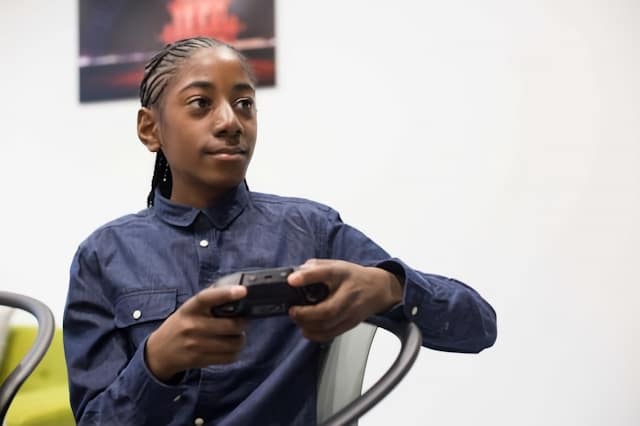What are the challenges of developing games for emerging foldable devices?

The advent of foldable devices has brought about a new wave of innovation in the tech industry. These cutting-edge gadgets, spearheaded by leaders like Samsung with its Galaxy Fold, offer an intriguing blend of versatility and advanced display technology. As foldable screens become increasingly popular, the gaming industry faces unique challenges in adapting to these new form factors. This article explores the complexities of developing games for these emerging foldable smartphones and what this means for both developers and users.
The Rise of Foldable Smartphones: A New Era in Mobile Gaming
The introduction of foldable technology has undeniably revolutionized the mobile landscape. Foldable phones, with their ability to transform from a compact device to a tablet-sized screen, offer an unmatched user experience. This flexibility opens up a plethora of opportunities for game developers, but it also presents significant hurdles.
Dans le meme genre : How can developers create dynamic lighting systems to enhance game realism?
Mobile gaming on foldable devices requires a rethinking of traditional app development approaches. Samsung Galaxy, for instance, has led the charge with its Galaxy Fold, which supports multi-window and split screen modes. These features enhance multitasking and app continuity but demand meticulous optimization from developers. Ensuring a seamless transition between different screen sizes and orientations is paramount to maintaining an engaging gaming experience.
Foldable screens introduce complexities in screen resolution and aspect ratios. Developers must consider how their apps will fold and unfold, adapting to various modes without compromising performance or aesthetics. This involves creating adaptable user interfaces and ensuring that touch controls remain intuitive across all display configurations.
A découvrir également : How can developers ensure secure data transmission in online multiplayer games?
The Technical Challenges of Foldable Device Game Development
Developing games for foldable devices involves overcoming several technical challenges. One of the primary concerns is app continuity, which ensures that a game runs smoothly regardless of how the device is folded. The user experience should be seamless, with the display adapting dynamically to changes in form factors.
App continuity is crucial for providing a consistent gaming experience. When a foldable smartphone switches from a folded to an unfolded state, the game must adjust its screen resolution, layout, and UI elements without causing disruptions. This requires advanced development techniques and thorough testing across different screen sizes.
Another technical hurdle is managing multiple window modes. Foldable phones often support multi-window functionality, allowing users to run multiple apps simultaneously. For games, this means ensuring that they can operate efficiently in split-screen mode without affecting performance. Developers must also consider how their games interact with other applications and how to handle potential conflicts.
Optimizing performance is another significant challenge. Foldable devices often have high-resolution screens and powerful hardware, but gaming apps must be optimized to make full use of these capabilities. Developers need to ensure that their games run smoothly, with minimal loading times and no lag, regardless of the screen state. This involves efficient resource management and leveraging hardware acceleration where possible.
Designing Games for Foldable Screens: User Interface and Experience
Creating an engaging user interface for foldable screens requires a careful balance between innovation and functionality. The user experience must be intuitive, with controls and elements that adapt seamlessly to different screen sizes and orientations. This involves rethinking traditional design paradigms and experimenting with new UI concepts.
One of the main considerations is how to utilize the larger display area when the device is unfolded. Developers have the opportunity to create more immersive gaming experiences, with detailed graphics and complex UI elements. However, they must also ensure that these elements are accessible and easy to navigate, even on a smaller screen.
Multi-window functionality adds another layer of complexity. Games need to be designed to operate smoothly in split-screen mode, allowing users to multitask without compromising the gaming experience. This requires careful planning of UI elements, ensuring that critical controls remain easily accessible and that the game adapts to different window modes.
Screen folding introduces unique challenges in UI transitions. The game must seamlessly adjust its layout when the device transitions between folded and unfolded states. This involves creating adaptable UI elements that can reconfigure themselves based on the available screen space. Developers must also consider how touch controls will function across different form factors, ensuring that they remain intuitive and responsive.
Mobile Gaming and Foldable Technology: The Future Outlook
The future of mobile gaming looks promising with the rise of foldable technology. These devices offer new opportunities for innovation, allowing developers to create more immersive and engaging gaming experiences. As foldable smartphones become more mainstream, we can expect to see a surge in games specifically designed for these devices.
One of the key areas of growth is in mobile games that leverage the larger display area of unfolded devices. Developers can create more detailed and complex game worlds, with richer graphics and deeper gameplay mechanics. This opens up new possibilities for genres like RPGs, strategy games, and simulations, where a larger screen can enhance the user experience.
Foldable technology also paves the way for new gameplay mechanics. The ability to fold and unfold the device can be integrated into the game itself, creating unique interactions and challenges. For example, a puzzle game might require users to physically fold their device to solve certain puzzles, adding a new dimension to the gameplay.
Multi-window and split-screen functionality can also enhance mobile gaming. Developers can create games that integrate with other apps, allowing users to multitask while playing. For example, a game might offer real-time strategy elements that can be managed alongside a messaging app, enabling users to communicate with friends while playing.
Developing games for foldable devices presents a unique set of challenges, but it also offers exciting opportunities for innovation. By embracing the versatility of foldable screens and optimizing for multi-window and split-screen functionality, developers can create more immersive and engaging gaming experiences.
The future of mobile gaming is bright, with foldable technology poised to play a significant role. As these devices become more common, we can expect to see a wealth of new games that leverage their advanced capabilities. For users, this means more dynamic and versatile gaming experiences, with games that adapt seamlessly to different form factors and screen sizes.
In conclusion, the challenges of developing games for foldable smartphones are significant, but they are outweighed by the potential for innovation and creativity. By focusing on app continuity, UI design, and performance optimization, developers can overcome these hurdles and deliver top-notch gaming experiences on the next generation of foldable devices. The foldable gaming revolution is just beginning, and it promises to transform the way we interact with mobile games.
